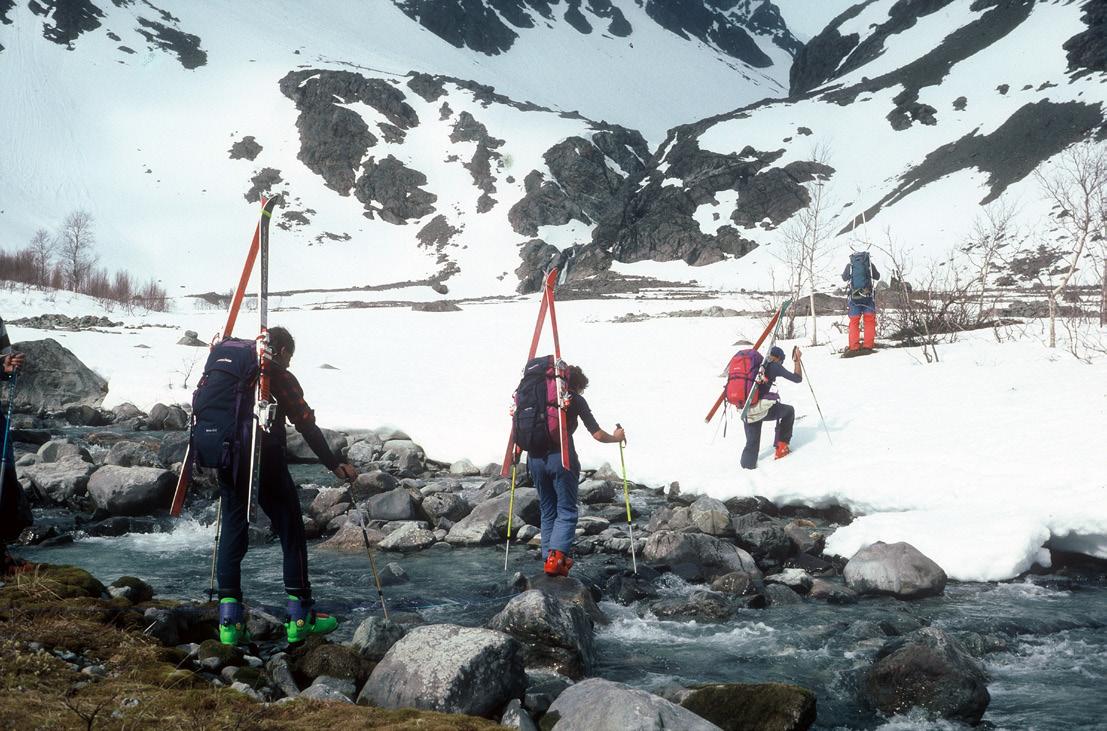
8 minute read
Encounters with a flower
Rob Collister
Last year, at the beginning of April, in a very different world to the one we now inhabit, I made my way up to a favourite cwm on Snowdon. It was near the end of a long dry spell: long-dead bracken stalks crackled underfoot, mosses were brown and desiccated, and I was able to amble dry-shod where normally angels would fear to tread without wellies. At the mountain wall two shaggy long-horned feral goats were waiting to usher me into the cwm before drifting away out of sight. I headed up grass and scree aiming for the bottom end of a band of crags that slants steeply up the hillside all the way to the ridge crest far above. Damp, vegetated and unattractive from a climbing point of view, they looked as though they might be home to some interesting plants. Geologically, they are probably formed of a basic tuff, ashfall from an eruption in Ordovician times. Sure enough, almost immediately my eye was caught by a bright splash of colour which at this time of year could only be one thing – a clump of purple saxifrage Saxifraga oppositifolia. This always flowers early (I found it once in the Devil’s Kitchen, Twll Du, on February 8th) but it was still a delightful surprise since I had not been consciously looking for it, producing the same sort of excitement as hearing the first cuckoo of the year. The excellent new book by Jim Langley and Paul Gannon (The Alps, A Natural Companion; Oxford Alpine Club 2019) tells me that the purple saxifrage (Saxifraga oppositifolia) holds the record for the highest flowering plant in the Alps, being recorded at 4450m on the Dom in Switzerland. It also grows further north than any other flower so it is truly an arctic-alpine and nearing the southern limit of its range in Snowdonia. As the climate warms it will become increasingly uncommon here.
Advertisement
If I had to name a favourite alpine plant it would probably be this one. In the startling boldness of its colour and its ability to thrive in the most inhospitable places it has rivals, of course; king of the alps Eritrichium nanum springs to mind, or moss campion Silene acaulis, perhaps. But, for me, purple saxifrage has more personal associations with mountains around the world than any other plant.
There was the occasion in Alaska when five of us were descending Mount Deborah. At a time when nearly 500 people
Tormaen porffor ar lefel y môr ym mis Mai, Alpau Lyngen, Norwy ● Purple saxifrage at sea-level in May, Lyngen Alps, Norway
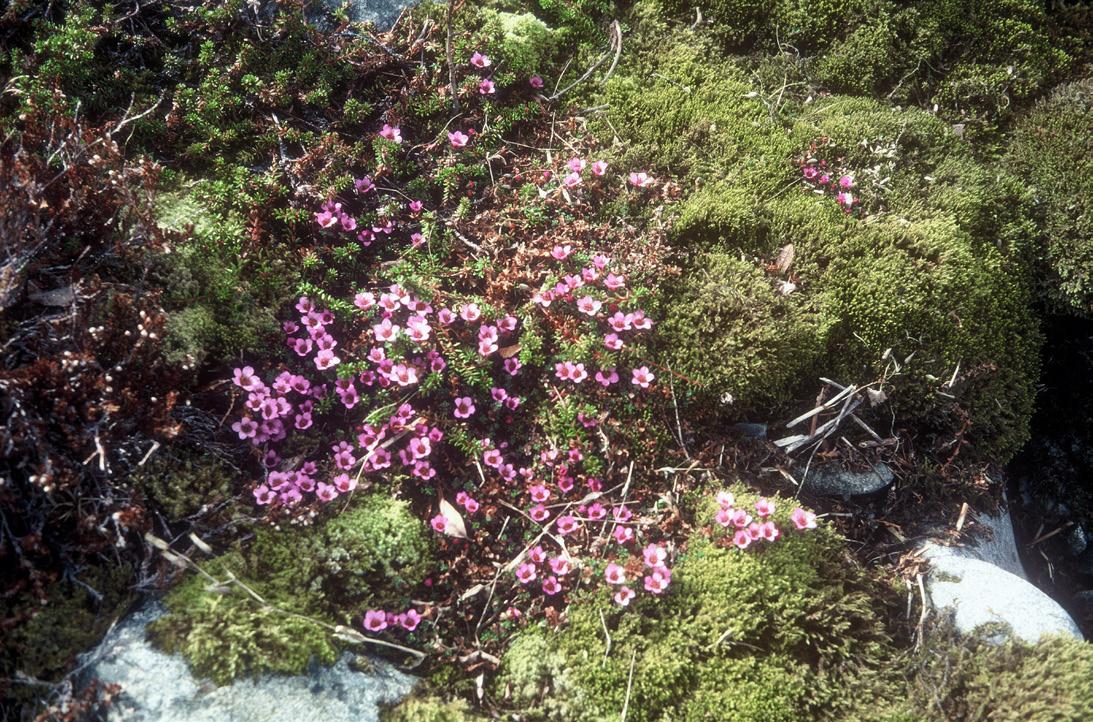
were thronging Denali (Mt McKinley), we were the only climbers in the entire eastern sector of the Alaska range. We had been on the mountain the best part of a fortnight, initially sleeping in snow caves and latterly bivouacking in some alarming places on the crest of a hugely corniced ridge. I was coming down last, climbing slowly and carefully under the weight of a 300ft rope on top of everything else. We were only a few feet from the glacier on some rather suspect rock and I was feeling tired and a bit sorry for myself when, suddenly, I noticed a little dab of purple by the toe of my boot. Totally unexpected, my spirits lifted instantly. It was like being welcomed back into the land of the living. For me, it was quite an emotional moment though none of the others had noticed the flowers and no one seemed interested when I mentioned them.
Another occasion was in the wilds of Kyrgyzstan. Two of us had crossed a high ridge into an otherwise inaccessible valley to attempt an unclimbed 6000 metre peak in a remote corner of the Tien Shan mountains. Lacking today’s obligatory props of satellite phone or emergency beacon, we were far from any possible help should things go wrong. Finding the solitary dash of purple in a sea of moraine as we set off on the final push felt like a message of encouragement, as if we were being wished good luck. In the event we did not reach the summit, retreating in a storm from high on the mountain but, given an extremely close call with a collapsing cornice, I have always felt the flowers were indeed a good omen.
Then there was the campsite at 5600m on the lower slopes of Makalu, in Nepal, a stony carpet adorned with purple rosettes, once we had cleared away the trash left behind by a recent trekking party. In fact, I seem to have found this lovely plant everywhere; everywhere that the rocks contain some calcium and can be described as base-rich, that is – at sea-level in the Lyngen Alps, Norway; in profusion on bare shale around the Dix hut, Switzerland; on the sun-drenched limestone walls of the Tenailles de Mont Brison in the Ecrins, France; nearer home, on the basalt escarpment of the Quiraing on Skye and countless places in the Cuillin.
I bought a mountain
I bought a MOUNTAIN
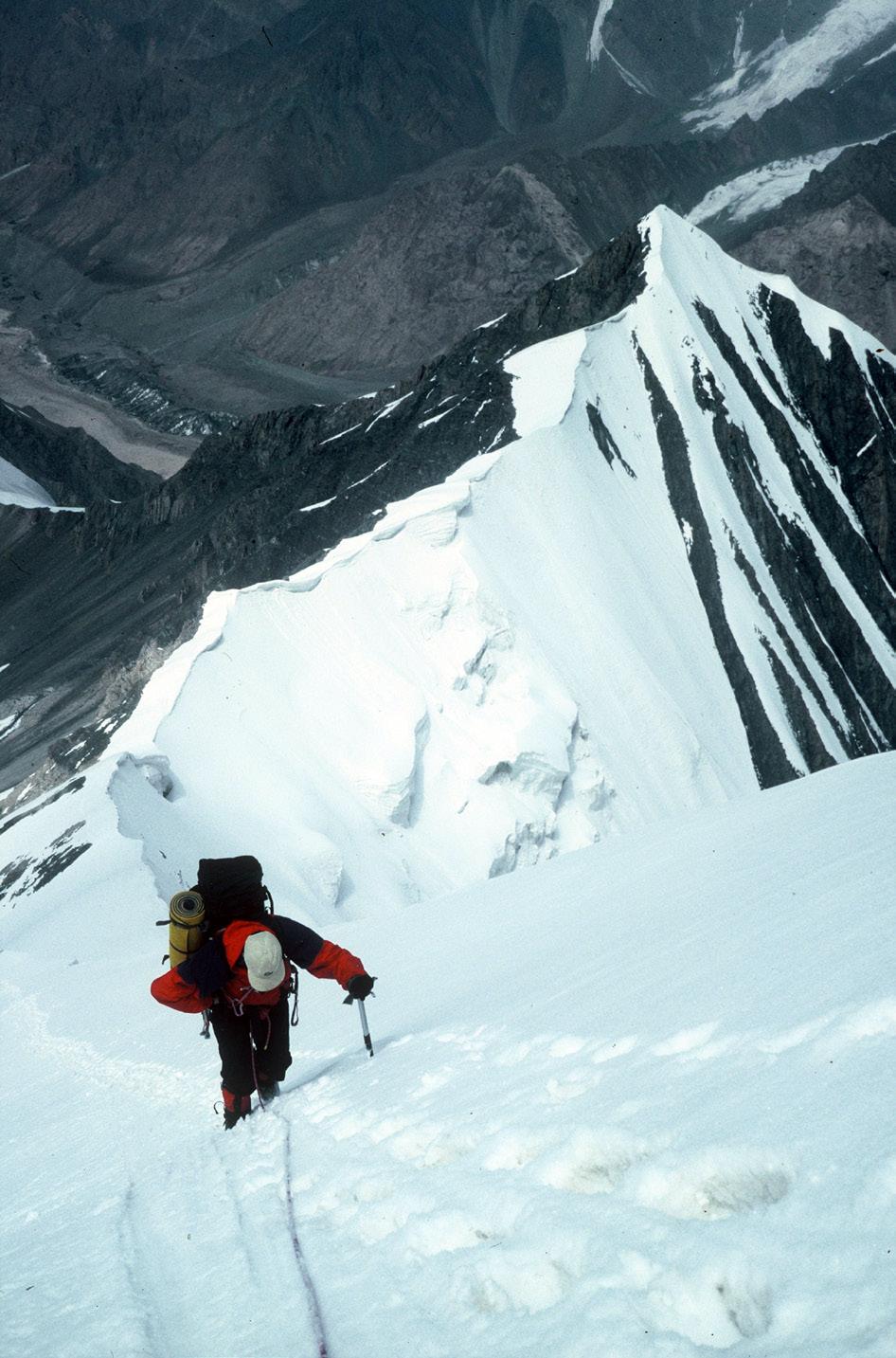
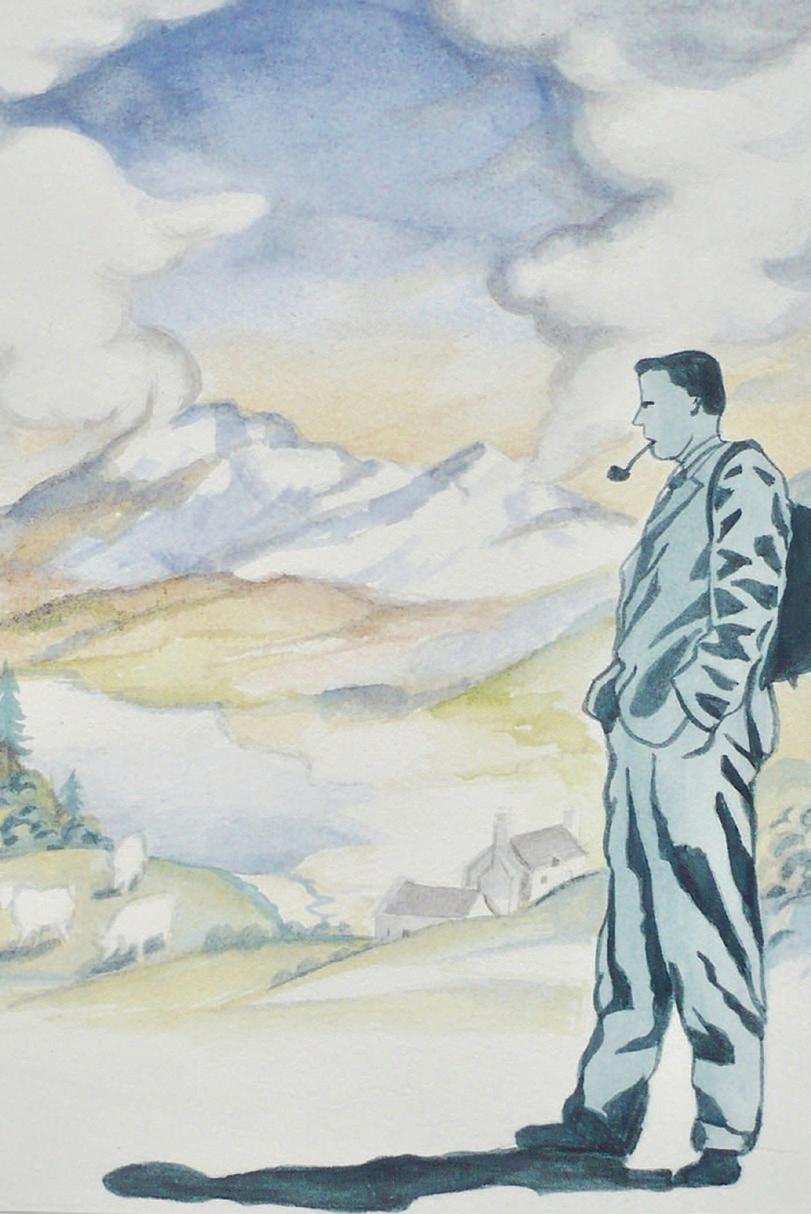
THOMAS FI RBANK
John Cousins yn dringo yn Tien Shan ● John Cousins climbing in the Tien Shan
Siabod, inspired to look there by the story of Evan Roberts, a quarryman from Capel Curig. Shooed out of the house by his wife on a day off, he came upon it purely by chance in the cwm above Llyn y Foel. He was so enthralled by the sight that he went on to become the leading authority on the arctic-alpine plants of north Wales, with an honorary doctorate from Bangor University to prove it. Curiously, though, I have never been able to find it there again despite several searches. I met Evan just the once, after he had gone blind, when he was happy to describe how to find the colony of mountain avens that flourishes in a most unlikely spot in the Carneddau.
This time, on Snowdon, purple saxifrage was growing in profusion, not just on the crag but in the grass at its foot also. In some places the blooms were pale and etiolated; in others, an unusually deep vibrant shade, the difference presumably linked to the mineral content of the soil. Kneeling to examine the flowers more closely, I noticed specks of calcium that had been extruded from the tips of tiny leaves. On limestone the whole leaf becomes encrusted with calcium, an adaptation believed to provide extra protection against wind and sun. For a few seconds my absorption was complete and I had an inkling of what Jim Perrin meant when he wrote of, ‘those acts of attention that are the profoundest prayer’. Continuing upward, I emerged from the shaded, ice-carved north face onto sunlit grassland, grateful and glad at heart, happy to leave the summit to others.
Rob Collister is a retired mountain guide and former trustee of the Snowdonia Society
New, illustrated edition of the classic account of life on a Welsh hill-farm
It is eighty years since Thomas Firbank wrote ‘I Bought A Mountain,’ his classic account of life on a Welsh hill-farm. Written on the eve of the Second World War, it became an international bestseller, selling over half-a-million copies worldwide, and has continued to delight generations of readers. To mark the book’s anniversary, the Gwydir Press will be publishing a new illustrated edition this year. The farm in question was Dyffryn Mymbyr, 2,400 acres of rugged upland terrain on the south side of the Glyderau in Snowdonia. He bought the farm almost on impulse in 1931; he was twenty-one years old. This was a drama brewed in a cauldron of steep-sided valleys and fierce weather, as he and his new wife, Esmé, battled to make the sheep farm productive with scant practical knowledge between them. It is a gripping read, honestly told; as exciting and as fast-paced as any John Buchan novel. ‘I Bought A Mountain’ was a landmark book which made an immense contribution to Welsh mountain life, hill farming and conservation and founded a new genre of ‘good life’ books. As well as a glittering military career (Thomas was awarded two MCs during the war and retired from the army in the rank of Lt. Colonel), he went on to write many more books on a variety of themes. ‘My life has been a series of reincarnations,’ he once said, ‘sheep farmer, soldier, salesman.’ As for Dyffryn, Esmé continued to work the land, building on what she and Thomas had started there. She went on to found the Snowdonia Society in 1967 and in 2005 the house and its land were bequeathed to the National Trust.
‘I Bought A Mountain’ is available from www.gwydirpress.com
Detholiad o’r delweddau buddugol ar gyfer calendr 2021 A selection of the winning images for the 2021 calendar


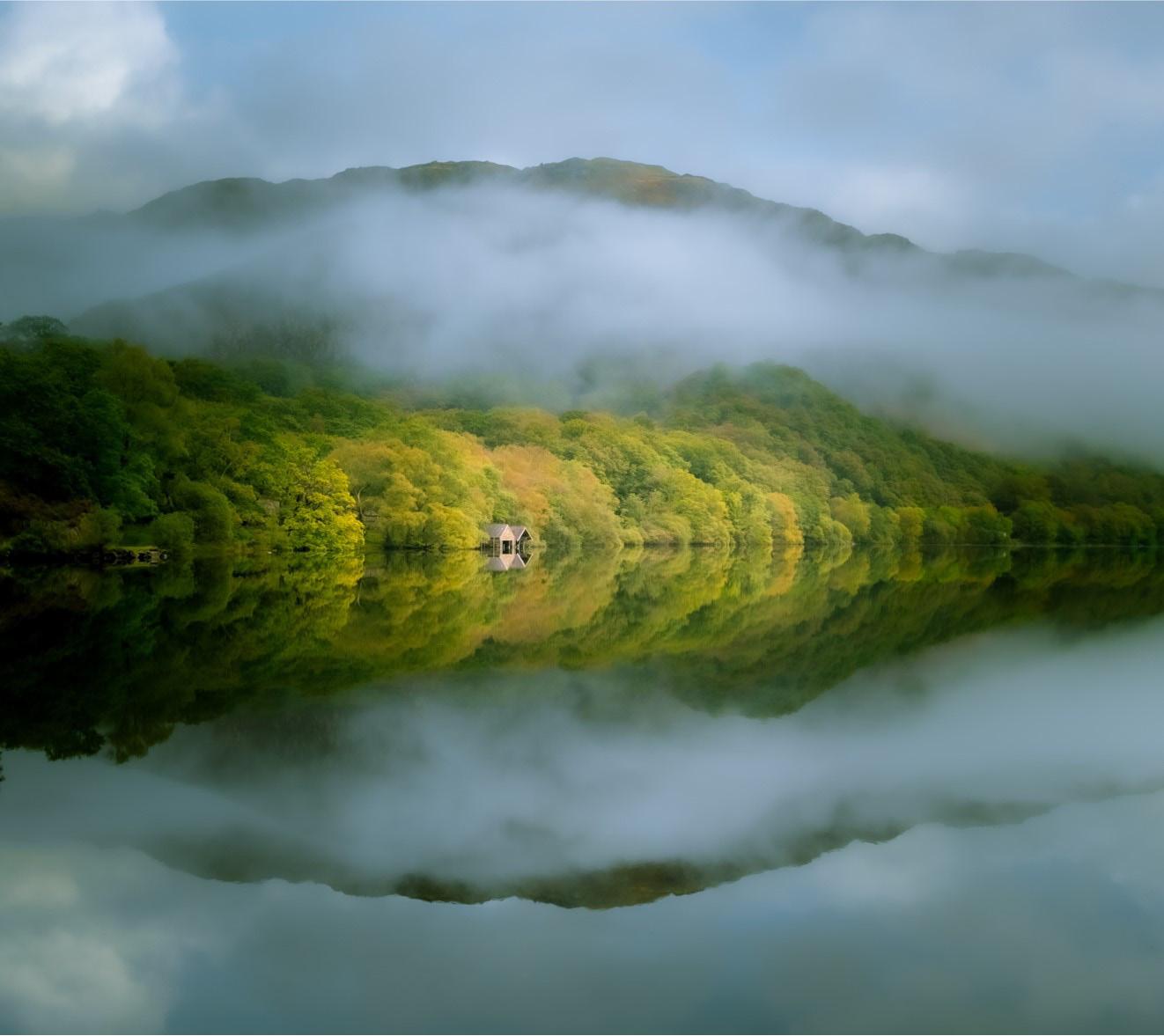
Calendr 2021
Enillwyr ein cystadleuaeth ffotograffiaeth Bydd yr arian a gesglir yn mynd tuag at ein gwaith parhaol yn Eryri
2021 Calendar
Winners of our photography competition Money raised will go towards our continued work in Snowdonia
Ar werth ar-lein: For sale online: www.snowdonia-society.org.uk/shop
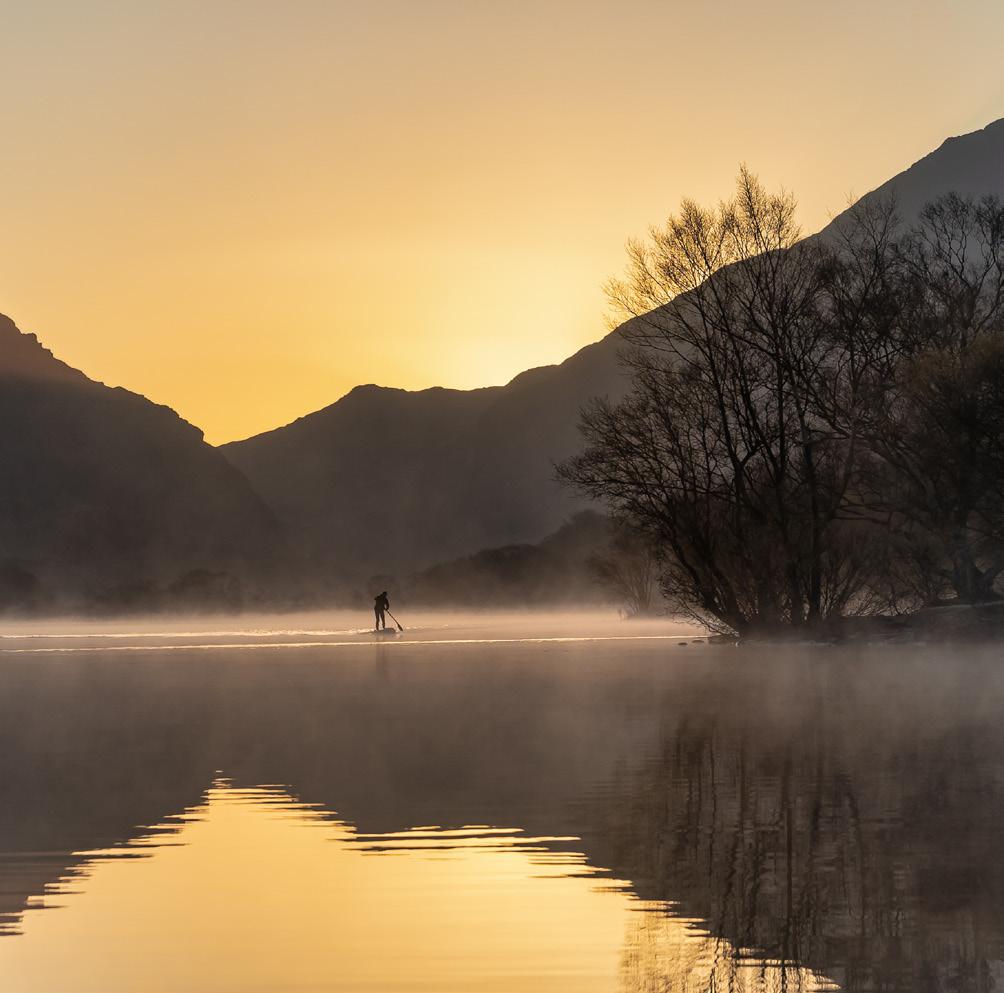
Cyfrannwch
ar-lein yn www.cymdeithas-eryri.org.uk gyda siec, yn daladwy i 'Cymdeithas Eryri'
Donate on-line at www.snowdonia-society.org.uk by cheque, payable to 'Snowdonia Society'
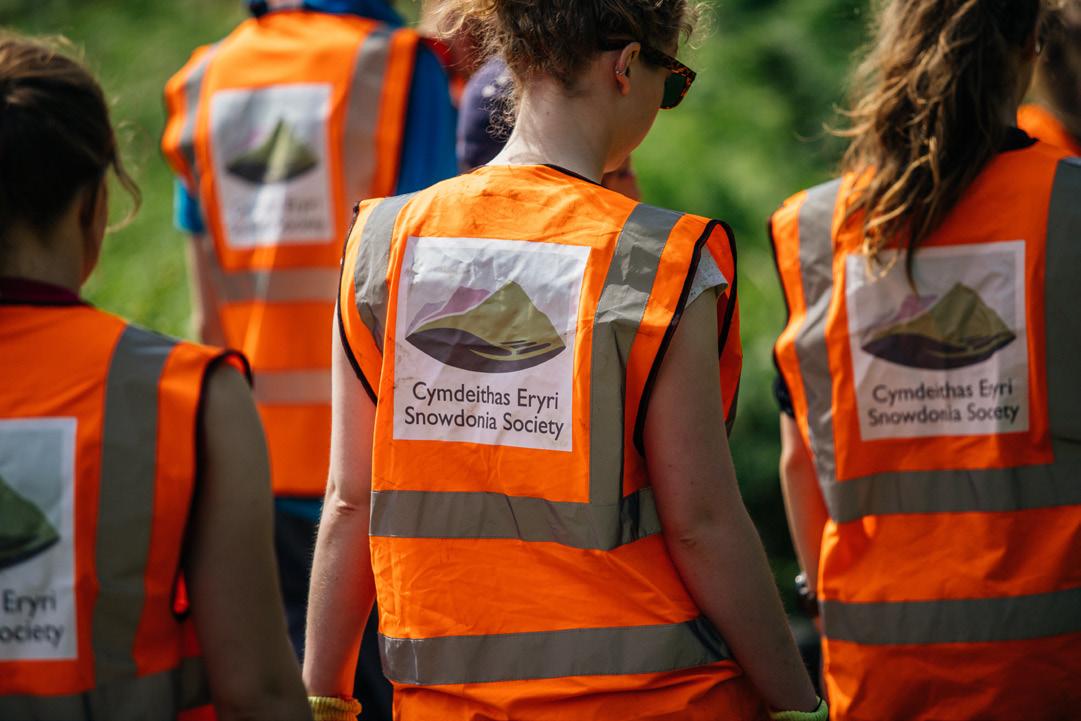
gadewch Gymynrodd i eryri
Mae rhoddion o ewyllysiau yn rhan hanfodol o'n hincwm, ac mae cymynrodd mawr neu bychan yn gwneud gwahaniaeth go iawn i'r hyn allwn ei gyflawni. Os byddwch yn ysgrifennu eich ewyllys, wedi i chi gofio eich teulu a'ch ffrindiau, ystyriwch adael cymynrodd i Gymdeithas Eryri os gwelwch yn dda.
Leave a Legacy to snowdonia
Gifts in wills form a crucial part of our income, and legacies large or small make a real difference to what we can achieve. If you are writing your will, once you have remembered family and friends, please consider leaving a bequest to the Snowdonia Society.
www.snowdonia-society.org.uk/leave-legacy
Cymdeithas Eryri ● Snowdonia Society, Caban, Yr Hen Ysgol, Brynrefail, Caernarfon, Gwynedd LL55 3NR 01286 685498 info@snowdonia-society.org.uk









